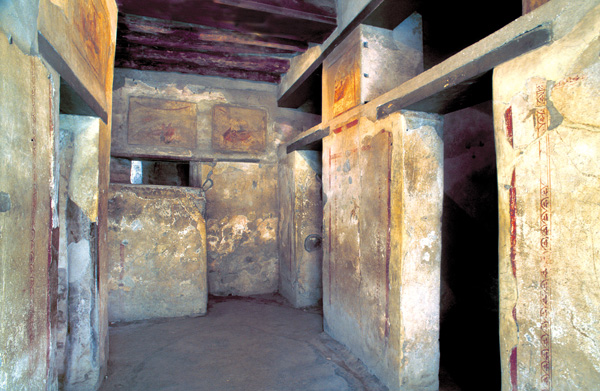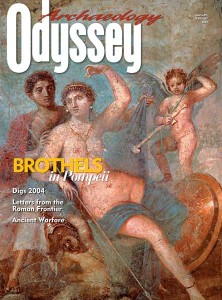
Pompeii’s material remains, frozen in time by the eruption of Mount Vesuvius, offer an unparalleled look at what a first-century A.D. Roman city was like. We are all familiar with Pompeii’s lavish villas and colorful wall paintings—some of which, wrote a bashful Mark Twain, “no pen could have the hardihood to describe.” But it wasn’t until the late 1980s and early 1990s that scholars began to pay serious attention to some important evidence of everyday life in Pompeii—evidence suggesting how these ancient Italians actually lived.
The evidence in question concerns prostitution.
Pompeii provides the most extensive archaeological evidence that we are ever likely to have for the sale of sex in Roman times. Yet no overall count of the number of brothels that existed in the ancient city was made until 1994. In two separate studies published that year, classicists Ray Laurence and Antonio Varone added up the number of buildings previously identified as brothels, and came up with a total of 35 (or more). Many scholars, including Laurence himself, believe nevertheless that a city of Pompeii’s size—with an estimated population of only around 10,000—simply could not have supported so many houses of prostitution.
Already a library member? Log in here.
Institution user? Log in with your IP address.

